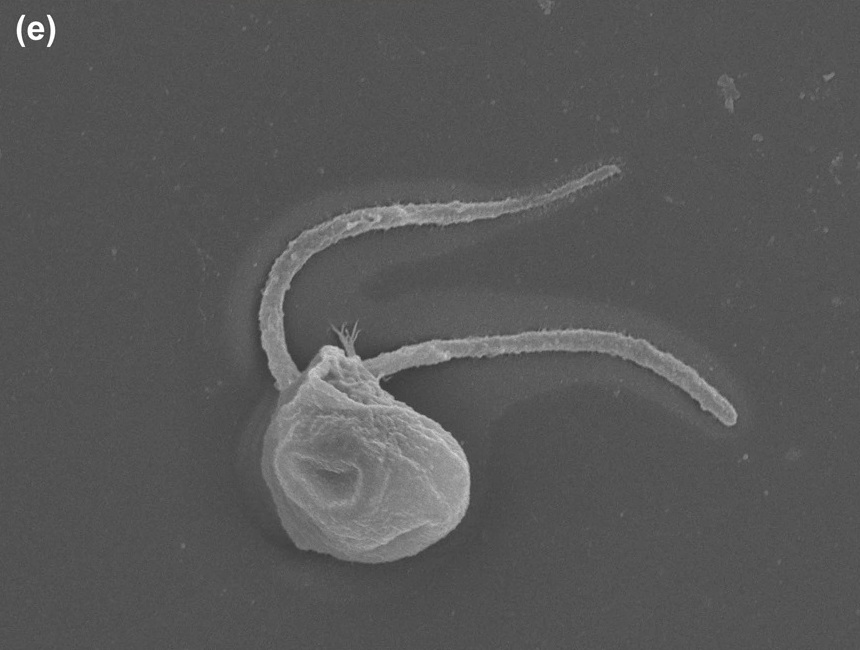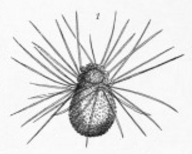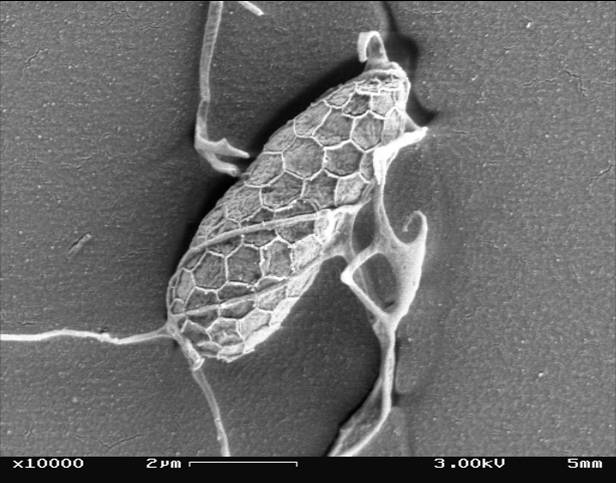|
Cyathobodoniae
Cyathobodoniae is a subclass of bicosoecids, a small group of unicellular flagellates, included among the heterokont The stramenopiles, also called heterokonts, are protists distinguished by the presence of stiff tripartite external hairs. In most species, the hairs are attached to flagella, in some they are attached to other areas of the cellular surface, an ...s. References External links * Bikosea Heterokonts {{Heterokont-stub ... [...More Info...] [...Related Items...] OR: [Wikipedia] [Google] [Baidu] |
Anoecida
Anoecida is an order of bicosoecids, a small group of unicellular flagellates, included among the heterokonts. Classification * Family Caecitellidae Cavalier-Smith 2006 ** Genus '' Halocafeteria'' Park, Cho & Simpson 2006 ** Genus '' Caecitellus'' Patterson et al. 1993 * Family Cafeteriaceae Moestrup 1995 ymbiomonadaceae Cavalier-Smith 2006; Anoecaceae Cavalier-Smith 2006** Genus '' Anoeca'' Cavalier-Smith, 2006 ** Genus '' Symbiomonas'' Guillou & Chrétiennot-Dinet 1999 ** Genus ''Cafeteria A cafeteria, called canteen outside the U.S., is a type of food service location in which there is little or no waiting staff table service, whether in a restaurant or within an institution such as a large office building or school; a scho ...'' Fenchel & Patterson 1988 References External links * Bikosea Stramenopile orders {{Heterokont-stub ... [...More Info...] [...Related Items...] OR: [Wikipedia] [Google] [Baidu] |
Bicosidia
Bicosidia is a subclass of Bikosea, a small group of unicellular flagellates, included among the heterokont The stramenopiles, also called heterokonts, are protists distinguished by the presence of stiff tripartite external hairs. In most species, the hairs are attached to flagella, in some they are attached to other areas of the cellular surface, an ...s. References External links * Bikosea Stramenopile taxa {{Heterokont-stub ... [...More Info...] [...Related Items...] OR: [Wikipedia] [Google] [Baidu] |
Bicosoecida
Bicosoecida (ICZN) or Bicosoecales/Bicoecea (ICBN) is an order of Bikosea, a small group of unicellular flagellates, included among the stramenopiles. Informally known as bicosoecids, they are free-living cells, with no chloroplasts, and in some genera are encased in a lorica. The name of the type genus '' Bicosoeca'' described by James-Clark in 1866 is derived from Greek roots (, vase, bowl, plus ''oekein'', inhabit). The philologically preferable compound would be ''Bicoeca'', as "corrected" by Stein in 1878 and followed by most subsequent authors. However, according to the ICBN and ICZN, the original spelling of the name cannot be considered incorrect and it must be used in its original form. The group was formerly considered to be related to the Chrysophyceae. Some authors use the vernacular term "bicosoecid" (or "bicoecid") in a narrower sense, only for ''Bicosoeca'', applying "bicoeceans" to ''Bicosoeca'' and related groups like ''Cafeteria''. With the advent of using ... [...More Info...] [...Related Items...] OR: [Wikipedia] [Google] [Baidu] |
Pseudodendromonadida
Pseudodendromonadida is a subclass of bicosoecids, a small group of unicellular flagellates, included among the heterokont The stramenopiles, also called heterokonts, are protists distinguished by the presence of stiff tripartite external hairs. In most species, the hairs are attached to flagella, in some they are attached to other areas of the cellular surface, an ...s. Classification * Family Filidae Cavalier-Smith 2013 ** Genus '' Filos'' Kim et al. 2010 * Family Nanidae Cavalier-Smith 2013 ** Genus '' Nanum'' Cavalier-Smith, 2013 * Family Neradidae Cavalier-Smith 2006 ** Genus '' Nerada'' Cavalier-Smith 2006 * Family Paramonadidae Cavalier-Smith 2006 ** Genus '' Paramonas'' Kent 1881 * Family Siluaniaceae Karpov 1998 ** Genus '' Adriamonas'' Verhagen et al. 1994 ** Genus '' Siluania'' Karpov 1998 * Family Pseudodendromonadaceae Hibberd 1985 ** Genus '' Pseudodendromonas'' Bourrelly 1953 ** Genus '' Cyathobodo'' Petersen & Hansen 1961 References External lin ... [...More Info...] [...Related Items...] OR: [Wikipedia] [Google] [Baidu] |
Cafeteria Roenbergensis
''Cafeteria roenbergensis'' is a small bacterivorous marine flagellate. It was discovered by Danish marine ecologist Tom Fenchel and named by him and taxonomist David J. Patterson in 1988. It is in one of three genera of bicosoecids, and the first discovered of two known ''Cafeteria'' species. Bicosoecids belong to a broad group, the stramenopiles, also known as heterokonts (Heterokonta) that includes photosynthetic groups such as diatoms, brown, and golden algae, and non-photosynthetic groups such as opalinids, actinophryid "heliozoans", and oomycetes. The species is found primarily in coastal waters where there are high concentrations of bacteria on which it grazes. Its voracious appetite plays a significant role in regulating bacteria populations. Physiology ''Cafeteria roenbergensis'' is a slightly flattened, kidney-shaped bicosoecid. Its cell typically measures between 3 and 10 μm and it has a volume of around 20 μm3. It is colorless and has two unequally size ... [...More Info...] [...Related Items...] OR: [Wikipedia] [Google] [Baidu] |
Eukaryota
The eukaryotes ( ) constitute the Domain (biology), domain of Eukaryota or Eukarya, organisms whose Cell (biology), cells have a membrane-bound cell nucleus, nucleus. All animals, plants, Fungus, fungi, seaweeds, and many unicellular organisms are eukaryotes. They constitute a major group of Outline of life forms, life forms alongside the two groups of prokaryotes: the Bacteria and the Archaea. Eukaryotes represent a small minority of the number of organisms, but given their generally much larger size, their collective global biomass is much larger than that of prokaryotes. The eukaryotes emerged within the archaeal Kingdom (biology), kingdom Asgard (Archaea), Promethearchaeati and its sole phylum Promethearchaeota. This implies that there are only Two-domain system, two domains of life, Bacteria and Archaea, with eukaryotes incorporated among the Archaea. Eukaryotes first emerged during the Paleoproterozoic, likely as Flagellated cell, flagellated cells. The leading evolutiona ... [...More Info...] [...Related Items...] OR: [Wikipedia] [Google] [Baidu] |
SAR Supergroup
SAR is a highly diverse clade of eukaryotes, often considered a supergroup, that includes stramenopiles (heterokonts), alveolates, and rhizarians. It is a node-based taxon (under the Sar name), including all descendants of the three groups' last common ancestor, and comprises most of the now-rejected Chromalveolata. Their sister group has been found to be telonemids, with which they make up the TSAR clade. Harosa is sometimes used synonymously with TSAR. Etymology The name SAR is an acronym derived from the first letters of its three constituent clades; it has been alternatively spelled RAS. The term Harosa (at the subkingdom level) has also been used, with Stramenopiles replaced by its synonym Heterokonta in this variant of the acronym. History of discovery Before the discovery of the SAR supergroup, stramenopiles and alveolates were classified in the supergroup Chromalveolata alongside haptophytes and cryptomonads, being believed to have acquired plastids th ... [...More Info...] [...Related Items...] OR: [Wikipedia] [Google] [Baidu] |
Heterokonta
The stramenopiles, also called heterokonts, are protists distinguished by the presence of stiff tripartite external hairs. In most species, the hairs are attached to flagella, in some they are attached to other areas of the cellular surface, and in some they have been secondarily lost (in which case relatedness to stramenopile ancestors is evident from other shared cytological features or from genetic similarity). Stramenopiles represent one of the three major clades in the SAR supergroup, along with Alveolata and Rhizaria. Stramenopiles are eukaryotes; most are single-celled, but some are multicellular including some large seaweeds, the brown algae. The group includes a variety of algal protists, heterotrophic flagellates, opalines and closely related proteromonad flagellates (all endobionts in other organisms); the actinophryid Heliozoa, and oomycetes. The tripartite hairs characteristic of the group have been lost in some of the included taxa – for example in most di ... [...More Info...] [...Related Items...] OR: [Wikipedia] [Google] [Baidu] |
Flagellate
A flagellate is a cell or organism with one or more whip-like appendages called flagella. The word ''flagellate'' also describes a particular construction (or level of organization) characteristic of many prokaryotes and eukaryotes and their means of motion. The term presently does not imply any specific relationship or classification of the organisms that possess flagella. However, several derivations of the term "flagellate" (such as " dinoflagellate" and " choanoflagellate") are more formally characterized. Form and behavior Flagella in eukaryotes are supported by microtubules in a characteristic arrangement, with nine fused pairs surrounding two central singlets. These arise from a basal body. In some flagellates, flagella direct food into a cytostome or mouth, where food is ingested. Flagella role in classifying eukaryotes. Among protoctists and microscopic animals, a flagellate is an organism with one or more flagella. Some cells in other animals may be flage ... [...More Info...] [...Related Items...] OR: [Wikipedia] [Google] [Baidu] |
Heterokont
The stramenopiles, also called heterokonts, are protists distinguished by the presence of stiff tripartite external hairs. In most species, the hairs are attached to flagella, in some they are attached to other areas of the cellular surface, and in some they have been secondarily lost (in which case relatedness to stramenopile ancestors is evident from other shared cytological features or from genetic similarity). Stramenopiles represent one of the three major clades in the SAR supergroup, along with Alveolata and Rhizaria. Stramenopiles are eukaryotes; most are single-celled, but some are multicellular including some large seaweeds, the brown algae. The group includes a variety of algal protists, heterotrophic flagellates, opalines and closely related proteromonad flagellates (all endobionts in other organisms); the actinophryid Heliozoa, and oomycetes. The tripartite hairs characteristic of the group have been lost in some of the included taxa – for example in most ... [...More Info...] [...Related Items...] OR: [Wikipedia] [Google] [Baidu] |




